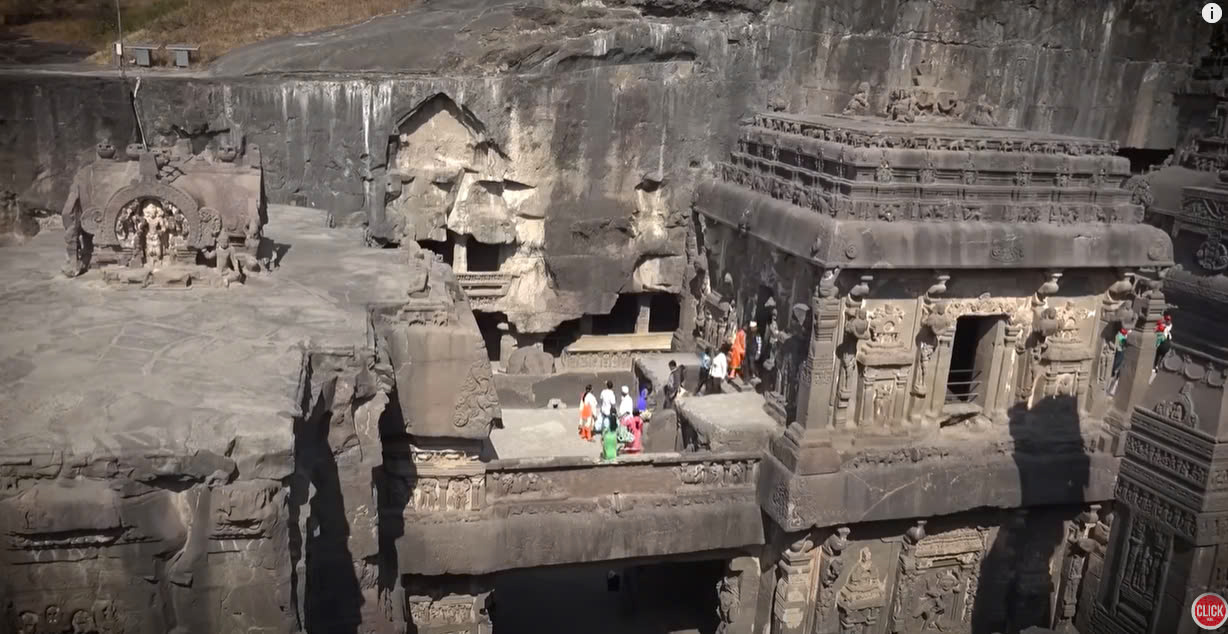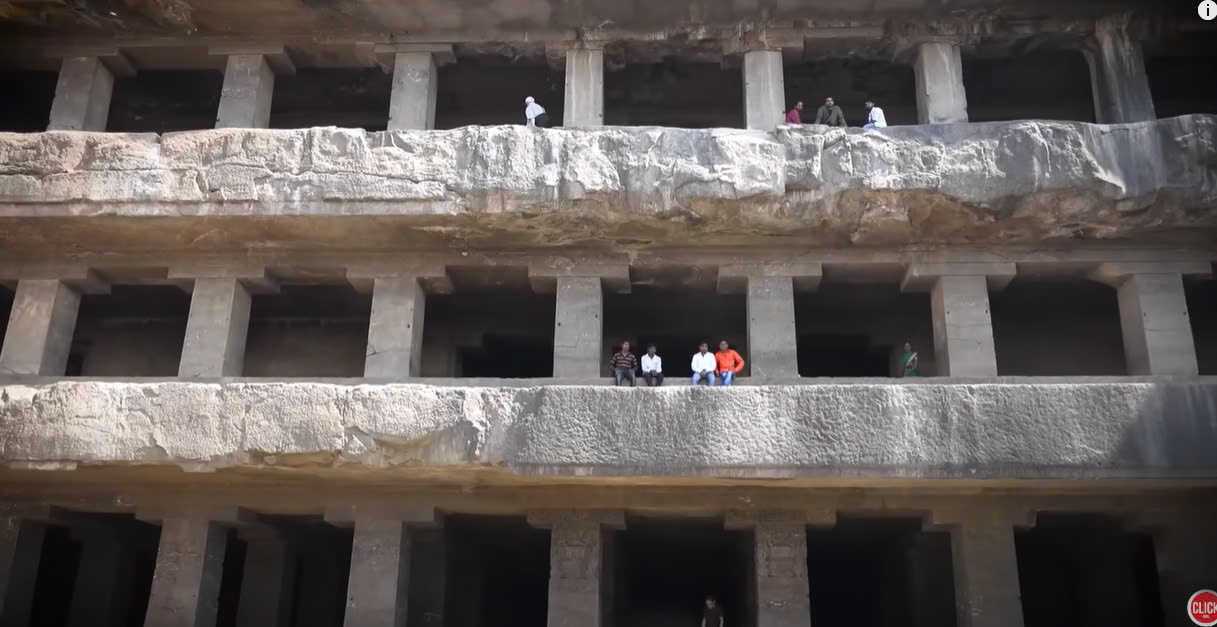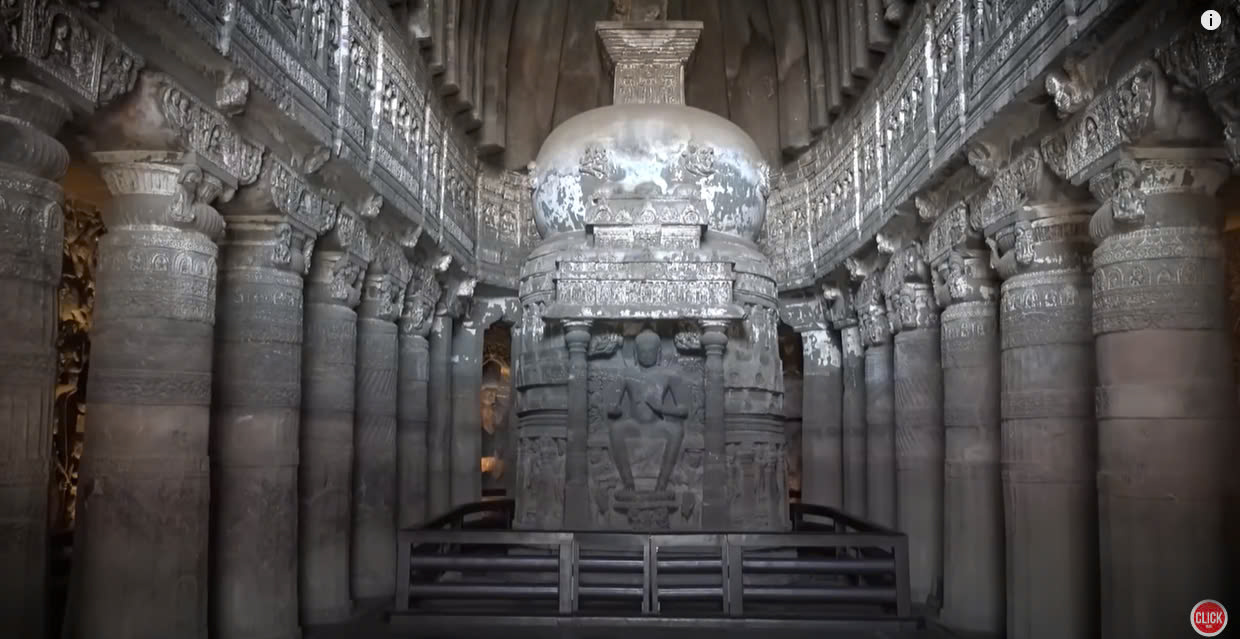Scientists Discovered An Ancient Mega structure On A Mountain Humans Could Never Build

In India, there are mysterious carvings in bedrock that suggest advanced ancient technology, contradicting the 6,000-year historical timeline often taught. If we consider a longer history, exploring lost civilizations becomes more complex but also more rewarding.
Our journey includes examining the Lion Gate and the Citadel of Mycenae, built around 1,250 BC. These ancient structures intrigue historians and archaeologists. The Lion Gate, in Turkey, was part of the Hittite Empire, showcasing their wealth and military strength with its massive lion sculptures. The gate’s stones, quarried locally, required advanced engineering to transport.

Similarly, the Citadel of Mycenae in Greece, dating from around the same period, is known for its monumental gate featuring a unique lion relief. This site, associated with the legendary King Agamemnon, used advanced techniques like cyclopean masonry and large stones, highlighting Mycenaean engineering skills.
Both sites, though different in location and culture, reflect remarkable architectural achievements. The mysteries of these ancient structures continue to fascinate and challenge our understanding of early civilizations.
In Sri Lanka, Sigiriya, a rock fortress built in the 5th century AD, reveals incredible ancient engineering with its water gardens, frescoes, and defensive features. Rediscovered in the 19th century, Sigiriya’s complex layout and artistic elements demonstrate advanced hydraulic technology and architectural ingenuity.
Tiwanaku and Puma Punku in Bolivia, near Lake Titicaca, are also subjects of intrigue. These ancient sites, with their precision and scale, challenge modern understanding and hint at advanced technologies or mysterious construction methods used by the Tiwanaku civilization.

In India, there are mysterious carvings in bedrock that suggest advanced ancient technology, contradicting the 6,000-year historical timeline often taught. If we consider a longer history, exploring lost civilizations becomes more complex but also more rewarding.
Our journey includes examining the Lion Gate and the Citadel of Mycenae, built around 1,250 BC. These ancient structures intrigue historians and archaeologists. The Lion Gate, in Turkey, was part of the Hittite Empire, showcasing their wealth and military strength with its massive lion sculptures. The gate’s stones, quarried locally, required advanced engineering to transport.

Similarly, the Citadel of Mycenae in Greece, dating from around the same period, is known for its monumental gate featuring a unique lion relief. This site, associated with the legendary King Agamemnon, used advanced techniques like cyclopean masonry and large stones, highlighting Mycenaean engineering skills.
Both sites, though different in location and culture, reflect remarkable architectural achievements. The mysteries of these ancient structures continue to fascinate and challenge our understanding of early civilizations.
In Sri Lanka, Sigiriya, a rock fortress built in the 5th century AD, reveals incredible ancient engineering with its water gardens, frescoes, and defensive features. Rediscovered in the 19th century, Sigiriya’s complex layout and artistic elements demonstrate advanced hydraulic technology and architectural ingenuity.
Tiwanaku and Puma Punku in Bolivia, near Lake Titicaca, are also subjects of intrigue. These ancient sites, with their precision and scale, challenge modern understanding and hint at advanced technologies or mysterious construction methods used by the Tiwanaku civilization.
It sounds like you’re working on a detailed exploration of ancient civilizations, focusing on significant archaeological sites such as Tiwanaku and the Nuragic structures of Sardinia. Here’s a summary of the key points from your text:
### Tiwanaku:
– **Early Accounts**: Spanish conquistadors in the 16th century first documented Tiwanaku, sparking curiosity about its origins.
– **Early Studies**: American archaeologist Ephraim George Squire and French explorer Charles Weer made detailed studies in the late 19th century.
– **Key Structures**:
– **Akapana Pyramid**: A large, terraced mound designed to emulate a sacred mountain, featuring advanced drainage systems and precise stonework.
– **Kalisaya Complex**: Contains the Gateway of the Sun, with intricate carvings related to Tiwanaku cosmology and astronomy.
– **Semi-Subterranean Temple**: Features carved stone heads, possibly representing diverse ethnic groups or important individuals.
– **Puma Punku**: Known for its precise stonework and H-shaped blocks, with theories on construction methods ranging from metal tools to abrasive materials. Some fringe theories suggest extraterrestrial assistance, though mainstream archaeology does not support this.
### Nuragic Civilization (Sardinia):
– **Naragi Structures**: Megalithic towers built by the Nuragic civilization, characterized by their conical towers and complex designs. Over 7,000 of these structures have been identified.
– **Early Study**: Initial mentions by 16th-century historians, with detailed studies beginning in the 19th century by figures like Alberto Laurer and Giovanni Liliu.
– **Construction Techniques**: Dry stone technique with large, irregularly shaped stones fitting together without mortar. Notable structures include Nuraxi in Barumini, which features a central tower and multiple surrounding towers.
Both Tiwanaku and Nuragic sites are renowned for their architectural sophistication and the advanced engineering techniques employed by their respective civilizations. The enduring mystery and precision of these structures continue to captivate scholars and enthusiasts alike.
It seems you’re working on a detailed script about ancient architecture and civilizations, focusing on the nuragic civilization of Sardinia and the Kingdom of Kerma in Sudan. Here’s a summary of the key points from your script:
### Nuragic Civilization of Sardinia
1. **Nuraga Architecture**:
– **Nuraga Gelosa**: Features a triangular layout with a central tower, thick walls, a courtyard, and additional rooms. It showcases advanced construction techniques with a well-preserved corbel-vaulted ceiling.
– **Nuraga Santu Antine**: One of the largest nuragas, known for its central tower and defensive capabilities. It includes three surrounding towers connected by a defensive wall, reaching up to 17 meters in height.
2. **The Well of Santa Cristina**:
– An architectural marvel with a trapezoidal vestibule, descending staircase, and a circular well chamber. Its precise alignment with the Sun during equinoxes creates a striking visual effect, indicating advanced knowledge of geometry and astronomy.
3. **Bronzetti**:
– Small bronze statuettes depicting warriors, animals, and deities, reflecting the nuragic people’s artistic sophistication and symbolic importance in their culture.
4. **Giants’ Tombs**:
– Megalithic gallery graves with large central stelae and burial chambers covered with massive stone slabs. These tombs, such as Koddu Veu, demonstrate advanced stone manipulation and align with celestial events, suggesting a connection to ancestor worship and seasonal ceremonies.
### Kingdom of Kerma (Sudan)
1. **Defufa**:
– Large mud brick temple known as the deua, dating from around 2500 to 1500 BCE. It stands about 18 meters high with a base of 50 meters by 25 meters. Its construction used local Nile mud mixed with straw and features thick walls for stability and defensive purposes.
2. **Archaeological Discoveries**:
– George Reisner’s and Charles Bonet’s excavations revealed a sophisticated urban center with extensive burial grounds, artifacts, and royal tombs adorned with offerings. Kerma was a major cultural and artistic center, rivaling contemporary Egyptian cities.
3. **Comparison with Egypt**:
– Despite similarities in Nile Valley location, Kerma’s use of mud bricks and its more communal social structure contrast with Egypt’s stone architecture and hierarchical society.
4. **Strategic Location and Trade**:
– Kerma’s position as a trade hub between sub-Saharan Africa and the Mediterranean facilitated economic prosperity and cultural exchange.
5. **Architectural Significance**:
– The defufa’s design includes multiple platforms potentially serving different functions, and its strategic orientation may have astronomical significance, integrating cultural, political, and religious activities.
If you need any further details or specific aspects elaborated on, feel free to ask!
The segment provides a comprehensive overview of several ancient megalithic sites and civilizations, detailing their architectural features, historical significance, and ongoing research. Here’s a summary of the key points covered:
### 1. **Nuragic Civilization**
– **Nuraga Gelosa:** Known for its triangular layout, central tower, thick walls, and a corbel-vaulted ceiling, showcasing advanced construction techniques.
– **Nuraga Santu Antine:** One of the largest nuraghe with a central tower reaching 17 meters, highlighting defensive capabilities and strategic planning.
### 2. **Well of Santa Cristina**
– **Design and Function:** A subterranean temple with a trapezoidal vestibule, descending staircase, and a circular well chamber. Its precise alignment with the Sun during equinoxes and sophisticated water management techniques are notable.
### 3. **Bronzetti**
– **Craftsmanship:** Small bronze statuettes depicting warriors, animals, and deities, reflecting high artistic sophistication and societal roles.
### 4. **Giants’ Tombs**
– **Structure and Purpose:** Megalithic gallery graves with large central stelae and burial chambers, often aligned with celestial events, indicating advanced knowledge of astronomy and collective burial practices.
### 5. **Kerma**
– **Deua Temple:** A massive mud brick structure in Northern Sudan, reflecting the sophisticated construction techniques and the city’s role as a major urban center.
– **Archaeological Discoveries:** Revealed extensive burial grounds, royal tombs, and a well-organized urban layout, highlighting Kerma’s cultural and artistic achievements.
### 6. **Sambian Stone Circles**
– **Distribution and Structure:** Located in Senegal and The Gambia, these stone circles made from laterite are believed to be burial sites, showcasing advanced societal organization and cultural sophistication.
### 7. **Gunung Padang**
– **Location and Significance:** A megalithic site in West Java, Indonesia, featuring extensive stone terraces and potential astronomical alignments.
– **Dating Controversies:** Radiocarbon dating and recent findings suggest the site may date back up to 20,000 BC, challenging established timelines and indicating advanced prehistoric societies in Southeast Asia.
– **Architectural Features:** Includes large basalt rocks, sophisticated engineering techniques, and possible astronomical functions.
Each of these sites offers unique insights into ancient civilizations and their capabilities, from architectural innovations to complex societal structures and spiritual practices. The ongoing research and discoveries continue to enhance our understanding of these enigmatic cultures.








